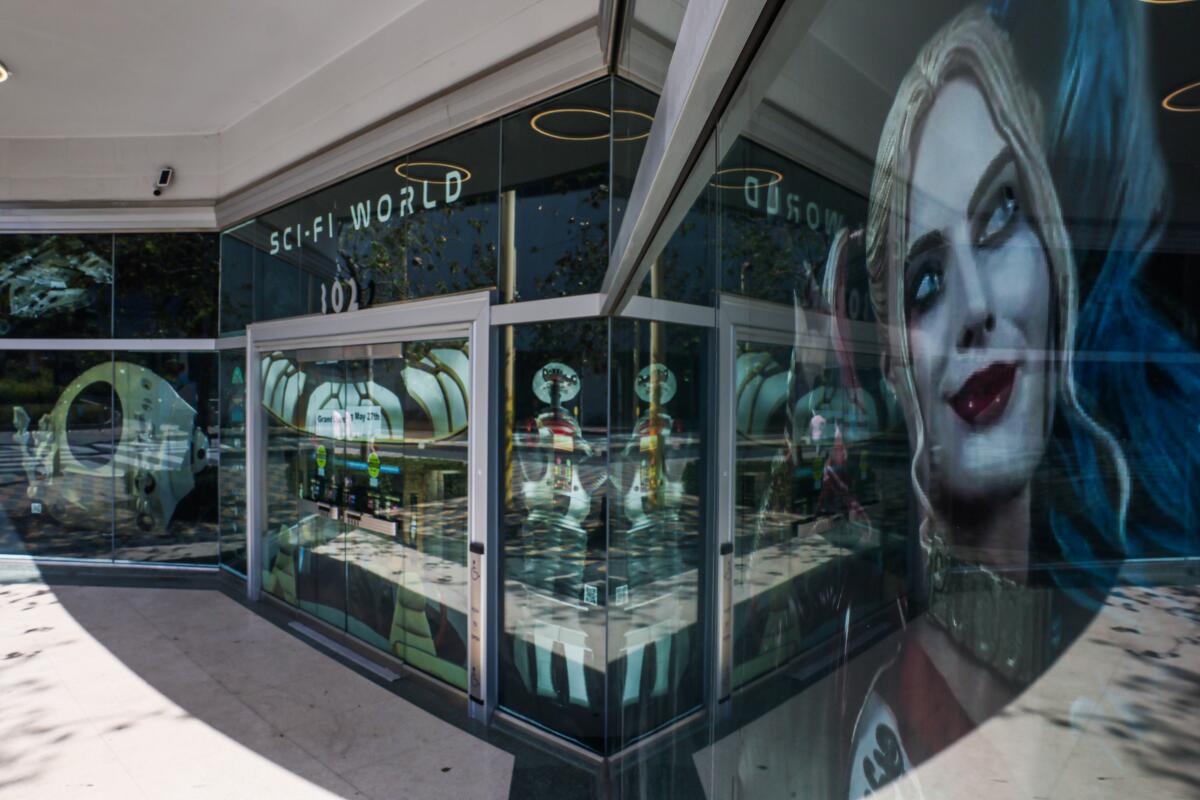A preschooler’s death, delayed improvements, a $9.5-million settlement: The true cost of L.A.’s traffic safety failures
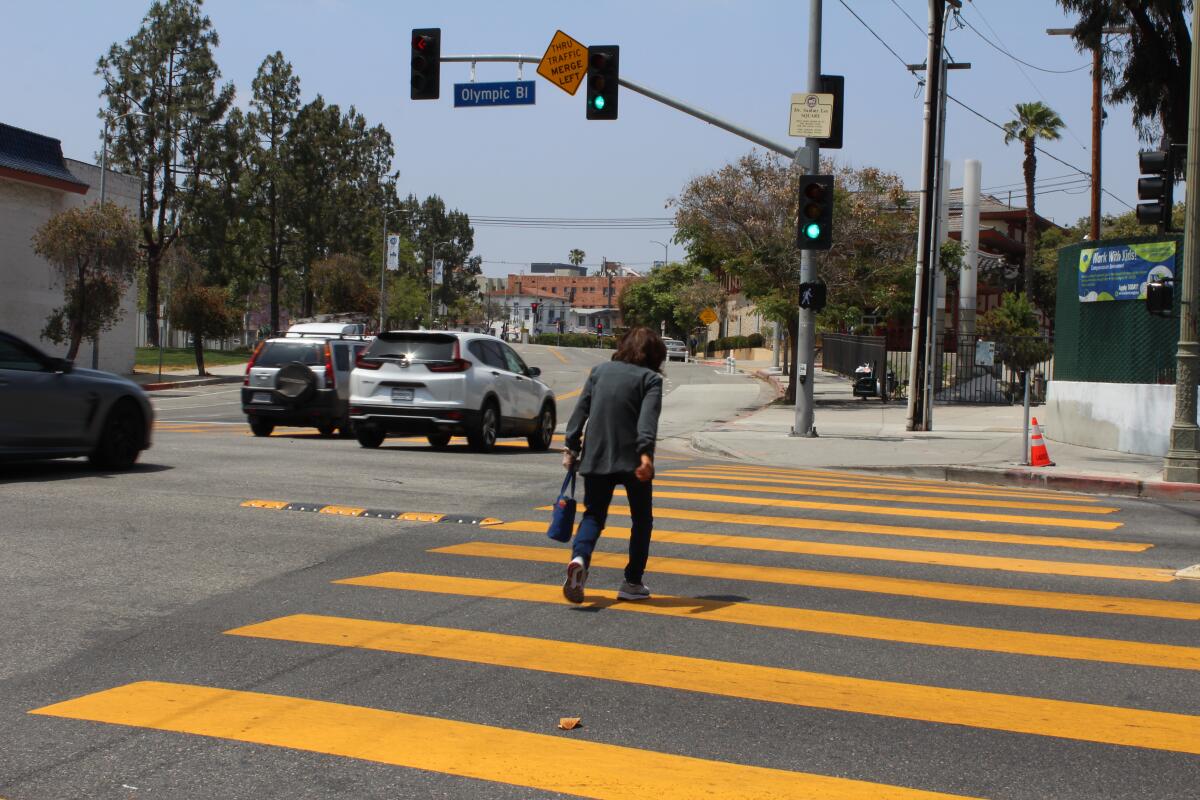
- Share via
Good morning. It’s Tuesday, June 4. Here’s what you need to know to start your day.
- Why did Los Angeles wait 4½ years after a 4-year-old girl’s death to add safer traffic signals?
- ‘Heat dome’ brings California’s first heat wave of the season.
- The best places to eat and drink in L.A. this month.
- And here’s today’s e-newspaper
You're reading the Essential California newsletter
Our reporters guide you through our biggest news, features and recommendations every morning
You may occasionally receive promotional content from the Los Angeles Times.
A case study in L.A.’s failures to deliver safer streets
At Olympic Boulevard and Normandie Avenue in Koreatown, traffic flows a bit differently lately.
Drivers wait for green arrows to make left turns. Next, crosswalk signals let pedestrians make their way into the intersection several seconds before cars get their own green light. The sequence reduces the risks that drivers will hit pedestrians, cyclists or other drivers.
This change was a long time coming. Koreatown is one of the most dangerous neighborhoods for pedestrians in L.A., particularly for schoolchildren walking to Mariposa-Nabi Primary Center.
Children such as Alessa Fajardo.
The 4-year-old and her mother, Erica, were holding hands as they legally crossed Olympic via the Normandie crosswalk on Oct. 16, 2019. A woman driving a sport utility vehicle turned left from the opposite direction and struck them. Erica survived, but Alessa died from traumatic brain injuries.
I’ve been reporting on what happened to Alessa and the city’s response to her death for several years. It’s a case study in how U.S. cities are failing to make streets safer for pedestrians, despite often saying that safety is their top priority.
It also reveals the true cost of traffic violence. Foremost is the incalculable human toll, but there’s also what it costs the city to make streets safer — and the price it ends up paying for not making improvements sooner.
Alessa was kind-hearted, bright, adventurous, tenacious and brave, her parents say
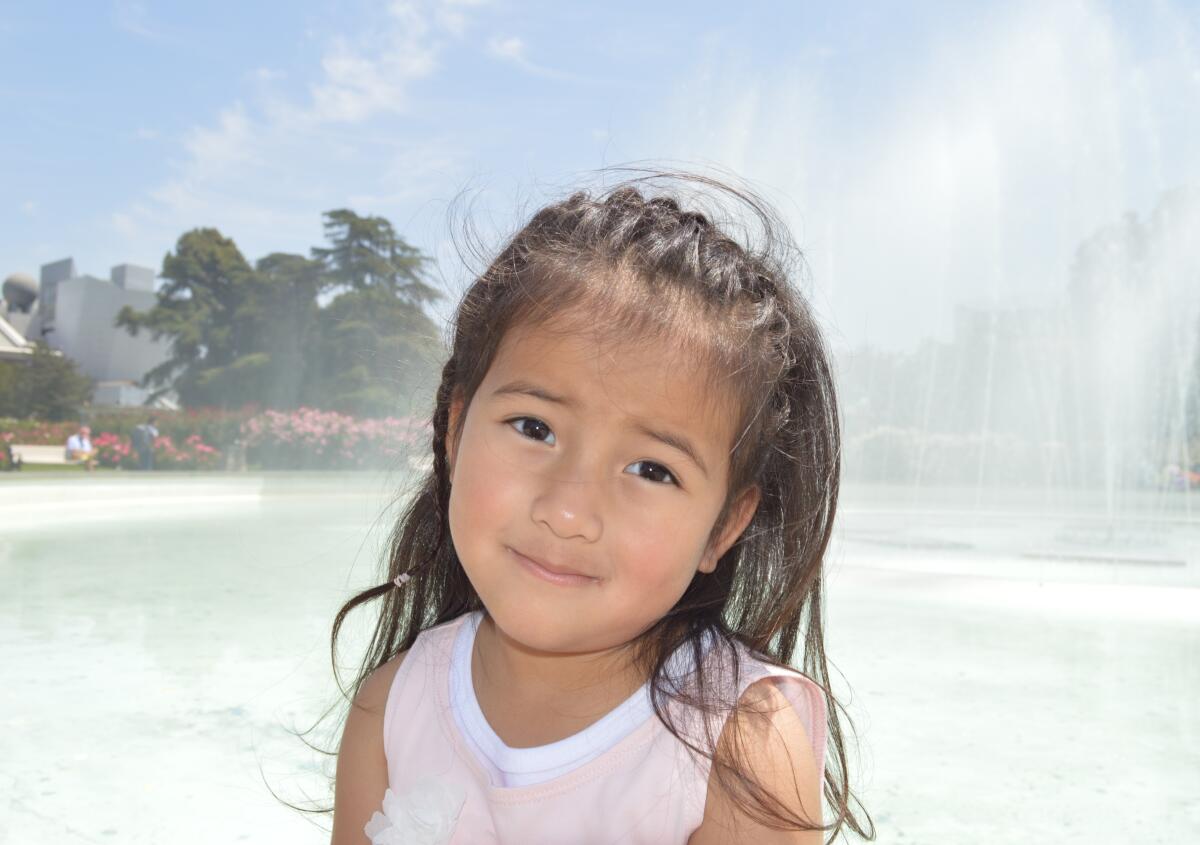
Alessa would have turned nine in April.
“She’s been gone longer than the amount of time that she was with us,” Alessa’s father, Jaime Fajardo, told me recently. “We see our kids growing up and we always think: what would Alessa be like in this situation?... I think we’re just gonna carry that on for the rest of our lives.”
Erica said she strives to summon Alessa’s bravery for her two other children, 6-year-old Clarissa and 3-year-old Alexis, named in honor of the sister he’ll never meet.
“She would always say … ‘I’m not gonna give up, mommy. I can do it!’” Erica said.
Erica said she still deals with pain from the crash and mostly avoids walking in Koreatown now. Mariposa-Nabi is about a five-minute walk from the family’s apartment, but she drives Clarissa there.
“I’m trying to break free from that,” she said. “Just small steps at a time.”
The Fajardos filed a wrongful death lawsuit against the city of L.A. in late 2020, arguing that officials knew the intersection was dangerous years before Alessa was killed but failed to act. The case was settled late last year, with the city paying Erica and Jaime $9.5 million.
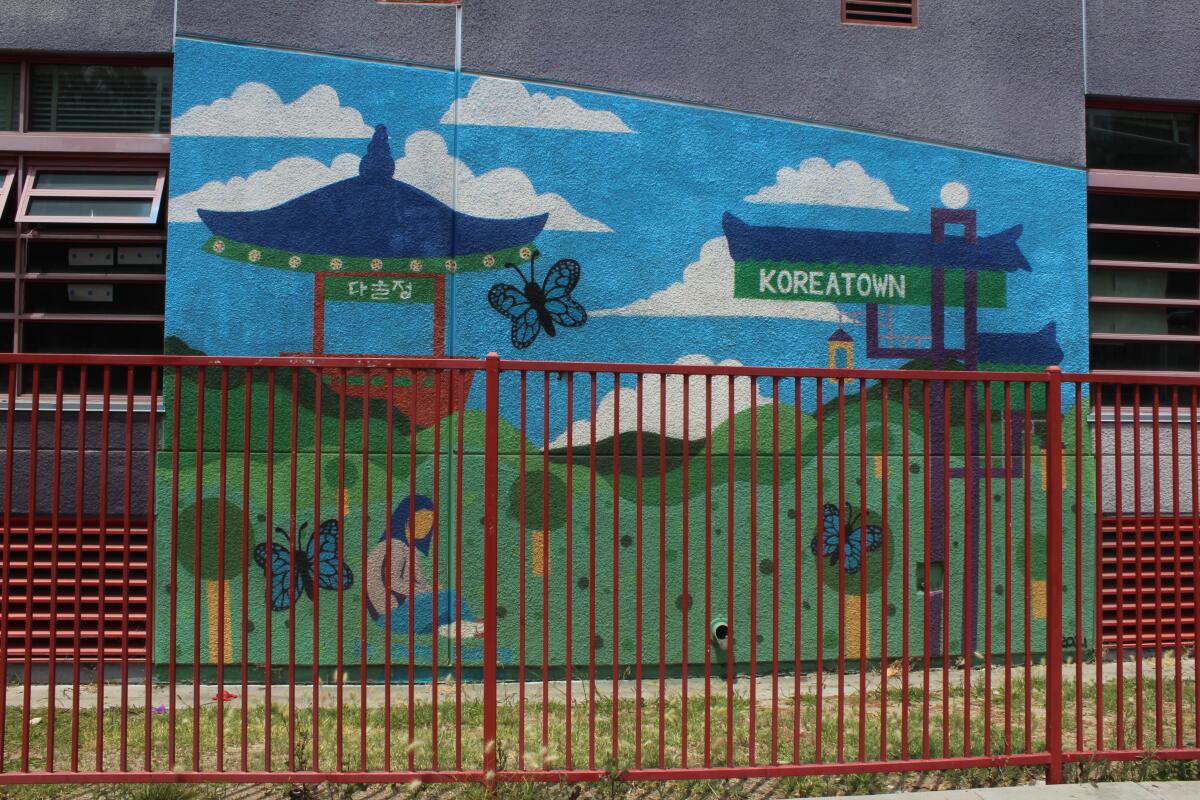
The city waited 4.5 years after a driver killed Alessa to add left turn signals
In the years since her death, Alessa’s family, concerned residents and street safety advocates all called on the city to upgrade traffic signals at the intersection.
“We really don’t want it to happen to another family here,” Jaime said.
L.A.’s Department of Transportation recommended adding protected left turn signals there in January 2020.
But it took more than 4½ years — longer than Alessa’s life — for those new signals to be activated. For Erica and Jaime, their absence was a daily, glaring reminder of the city’s failure.
Why did it take so long? The short answer is actually a doozy.
In L.A., street safety improvements depend on individual councilmembers identifying funding and authorizing LADOT to conduct the work.
Neither former District 10 Councilmember Herb Wesson, who represented the district when Alessa was killed, nor his successor, Mark Ridley-Thomas, secured that funding. Ridley-Thomas was indicted on federal corruption charges, suspended from the council and later convicted and removed from his seat in late March 2022. Nobody represented the district until Heather Hutt was appointed that September.
Hutt identified and allocated $530,000 for the new signals in June 2023, but the installation work did not begin until April 2024, four months after the family’s suit against the city was settled.
District 10 staff would not comment on the record about why they could not secure the funds in 2020, 2021, 2022 and early 2023.
“The moment our office could add left-hand traffic signals on Olympic Blvd. & Normandie Ave., we moved immediately,” Hutt said in a statement to The Times.
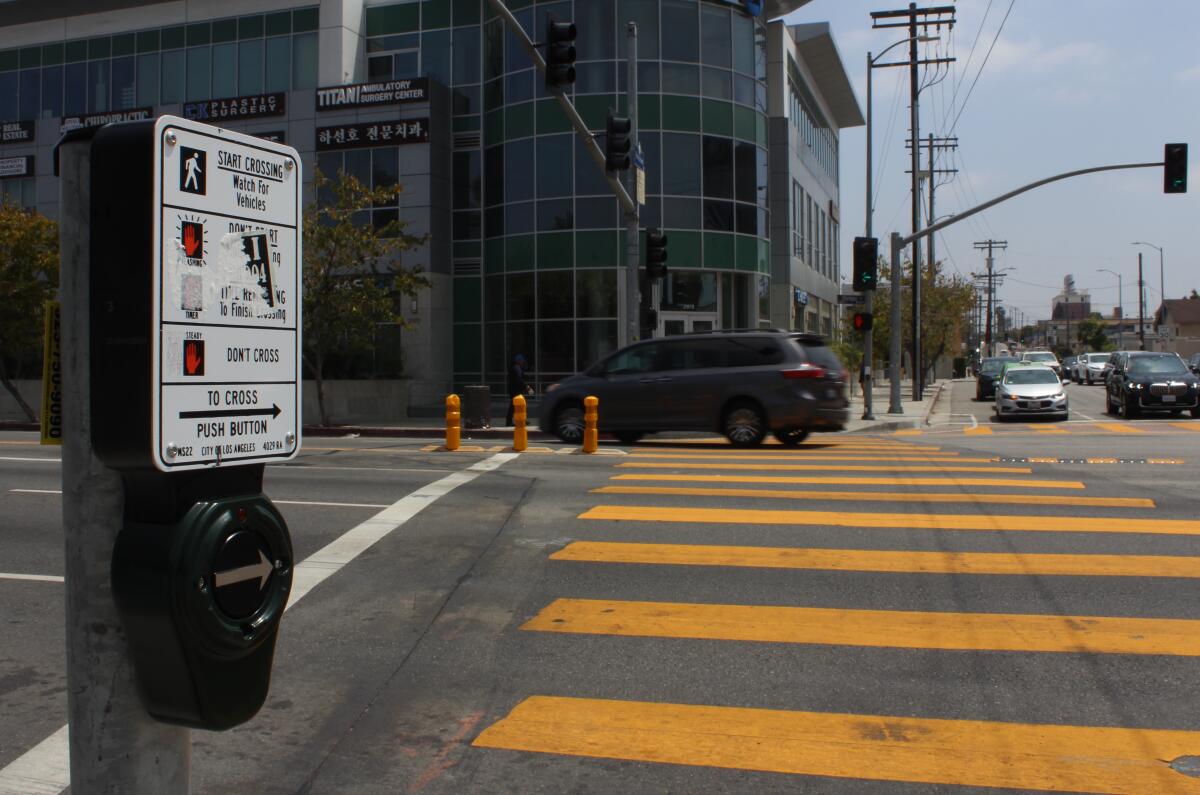
L.A. knew the Koreatown school zone was hazardous years before Alessa’s death
The city had long documented the dangers pedestrians face in Koreatown — especially schoolchildren.
“It takes a tragedy like this to get the city to actually do something and react,” said Court Purdy, the attorney who represented the Fajardo family in their lawsuit against L.A. “They fear bad press more than big judgments.”
In 2013, nearly two years before Alessa was born, the city identified LAUSD schools with the “highest need” for traffic safety improvements. Mariposa-Nabi ranked 13th out of the district’s more than 1,000 campuses.
In 2017, city officials dubbed Koreatown the fourth-most dangerous neighborhood for pedestrians and cyclists in L.A.
In the year before Alessa’s death, LADOT proposed a slate of safety improvements for streets around Mariposa-Nabi, which included leading pedestrian intervals, or LPIs, which allow pedestrians a head start in crosswalks.
LPIs are one of the “proven safety countermeasures” that allow pedestrians to “better establish their presence in the crosswalk” before drivers enter an intersection, according to the Federal Highway Administration.
The intersection where Alessa and Erica were hit was supposed to get an LPI upgrade, but the work was never funded. The city eventually added LPIs at Olympic and Normandie more than a year after Alessa was killed there.
“Protecting children traveling to and from school is a key focus of LADOT’s safety improvement efforts,” LADOT spokesperson Colin Sweeney said in a statement.
Adding an LPI to a traffic signal costs about $2,500 before labor and less than $5,000 overall, Sweeney said. Installing left-turn signals at the intersection cost $530,000, he noted. The city paid the Fajardos $9.5 million to settle their lawsuit for their daughter’s death.
“They had the knowledge back in 2013 to have prevented [Alessa’s] 2019 death,” Purdy said. “It’s like peeling back the onion and you realize: ‘Oh my gosh, they’re actually not doing anything.’”
The city attorney’s office declined to comment on the Fajardos’ lawsuit or the settlement.
In more than four years of reporting since Alessa was killed, one thing I’ve learned is that traffic killings contain layers of responsibility. In tomorrow’s newsletter, I’ll explore more of those layers.
Today’s top stories
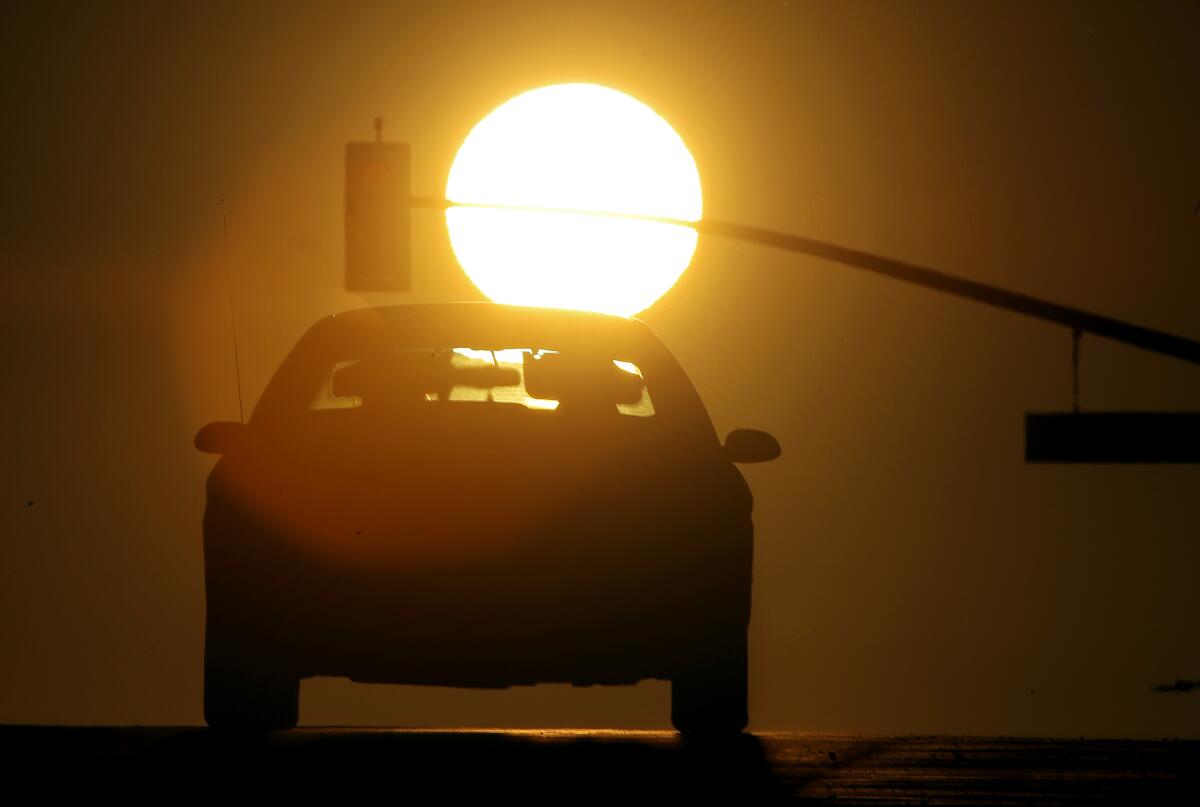
Climate and environment
- ‘Heat dome’ brings California’s first heat wave of the season, with triple-digit temperatures.
- Extreme heat forecast for Western U.S. may kick off a sweltering summer. Here’s the outlook.
- The oil industry asks the Supreme Court to block climate change lawsuits from California and other states.
- Despite the spread of bird flu, lawmakers in some states are pushing to legalize raw milk.
Mexico’s presidential election
- Mexico elects leftist Claudia Sheinbaum as the first female president in its history.
- Opinion: Mexico’s election of Claudia Sheinbaum is historic. But should we be celebrating it?
- Gustavo Arellano: What Mexico’s historic presidential election can teach the U.S.
More big stories
- Rubio’s Coastal Grill, citing rising business costs, abruptly shuts down 48 restaurants in California.
- Tension, distrust, anxiety pervade UCLA: ‘Everywhere you turn there’s a security guard.’
- Nasty surprise for new homeowners: Daily fines for previous owners’ pot operation.
- Corral fire in San Joaquin County injures two firefighters and burns one home.
- Cyndi Lauper sets four California shows as she plans to kick off farewell tour this fall.
- Spotify raises prices on premium plans to boost profits.
- Caitlin Clark’s rough weekend in the WNBA: What happened?
- Adele tells a homophobic heckler to ‘shut up’ on first day of Pride Month in Las Vegas.
- Cleaners find 235 pounds of meth at an Airbnb, then U-Haul arrives for pickup, police say; two arrested.
- ‘Shark!’ Swimmers race to save bleeding man off Southern California beach.
- Did Home Depot staff bolt planters to an L.A. street to deter RV parking? The city is investigating.
- Who will run Gaza after the war? Israel? Hamas? The U.N.?
Get unlimited access to the Los Angeles Times. Subscribe here.
Commentary and opinions
- LZ Granderson: Caitlin Clark can handle the bruises that come with being a WNBA rookie.
- Dylan Hernández: Dodgers are winning again, but who’s convinced this team will win in October?
- Editorial: Lawmakers, quit trying to evade your constituents.
- Sammy Roth: Why razing Joshua trees for solar farms isn’t always crazy.
- Michael Hiltzik: Anatomy of a smear — Fauci faces the House GOP’s clown show about COVID.
- Jonah Goldberg: Could the guilty verdict cost Donald Trump the election? Sure it could.
Today’s great reads
A child porn conviction and angry ‘Star Trek’ fans: Inside the drama around a new sci-fi museum. The opening of the Sci-Fi World museum in Santa Monica has been plagued by multiple delays and angry “Star Trek” fans. Staff and volunteers have quit and claim the founder, who raised money for the project and was later convicted for possession of child pornography, remains active in the museum, which the founder denies.
Other great reads
- After 13 years, a homeless Angeleno broke into her old, vacant home and wants to stay forever.
- Can money conquer death? How wealthy people are trying to live forever.
How can we make this newsletter more useful? Send comments to [email protected].
For your downtime
Going out
- 🍔 🍣 The best places to eat and drink in L.A. this month, according to our food writers.
- 🖼️ Nine immersive experiences in Las Vegas you should book ASAP.
Staying in
- 📺 Thirteen essential LGBTQ+ television shows (and a parade) to watch during Pride Month.
- 🧑🍳 Here’s a recipe for penne with caramelized cauliflower, garlic and chile.
- ✏️ Get our free daily crossword puzzle, sudoku, word search and arcade games.
And finally ... a great photo
Show us your favorite place in California! We’re running low on submissions. Send us photos that scream California and we may feature them in an edition of Essential California.
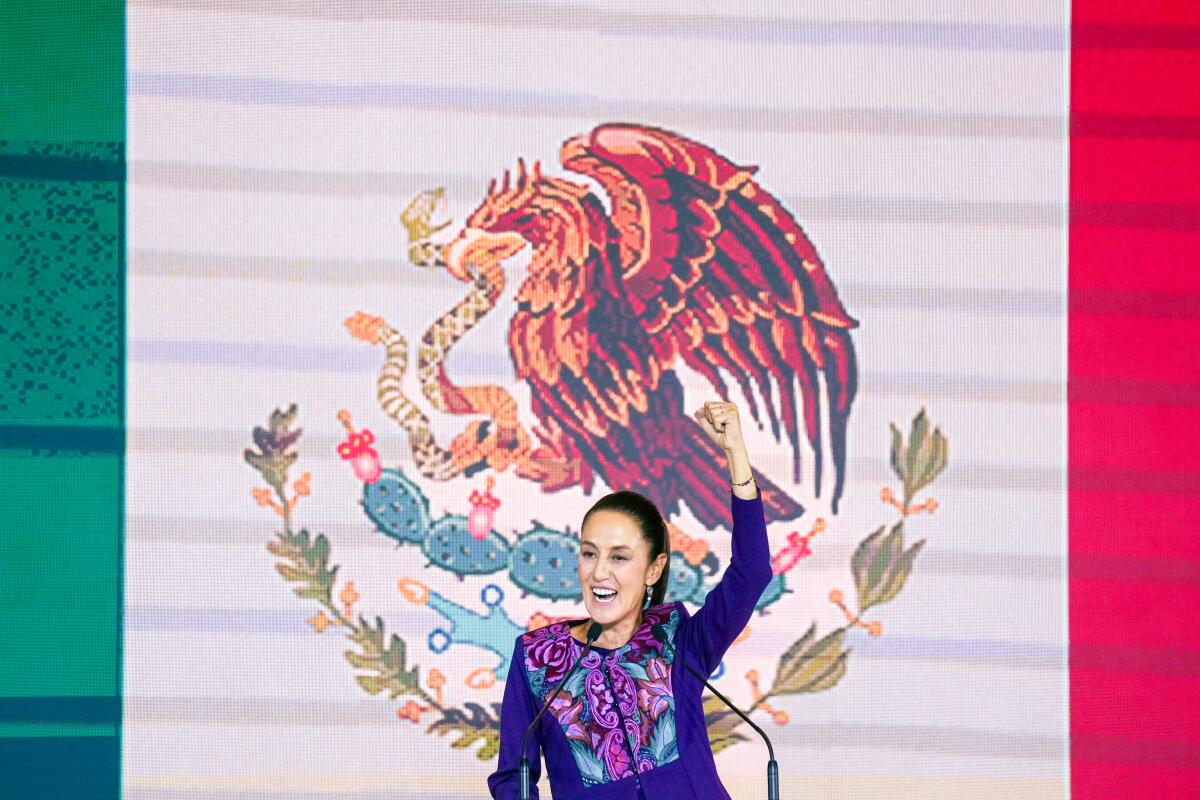
Today’s great photo is from Associated Press photographer Fernando Llano. Llano caught this photograph as Claudia Sheinbaum addressed supporters early Monday in Mexico City after the National Electoral Institute announced she held an irreversible lead in the election.
Have a great day, from the Essential California team
Ryan Fonseca, reporter
Defne Karabatur, fellow
Andrew Campa, Sunday reporter
Kevinisha Walker, multiplatform editor and Saturday reporter
Christian Orozco, assistant editor
Stephanie Chavez, deputy metro editor
Karim Doumar, head of newsletters
Check our top stories, topics and the latest articles on latimes.com.
Sign up for Essential California
The most important California stories and recommendations in your inbox every morning.
You may occasionally receive promotional content from the Los Angeles Times.
